Hands-On: The Méraud Antigua Chronograph Watch, Equipped With The Landeron 248
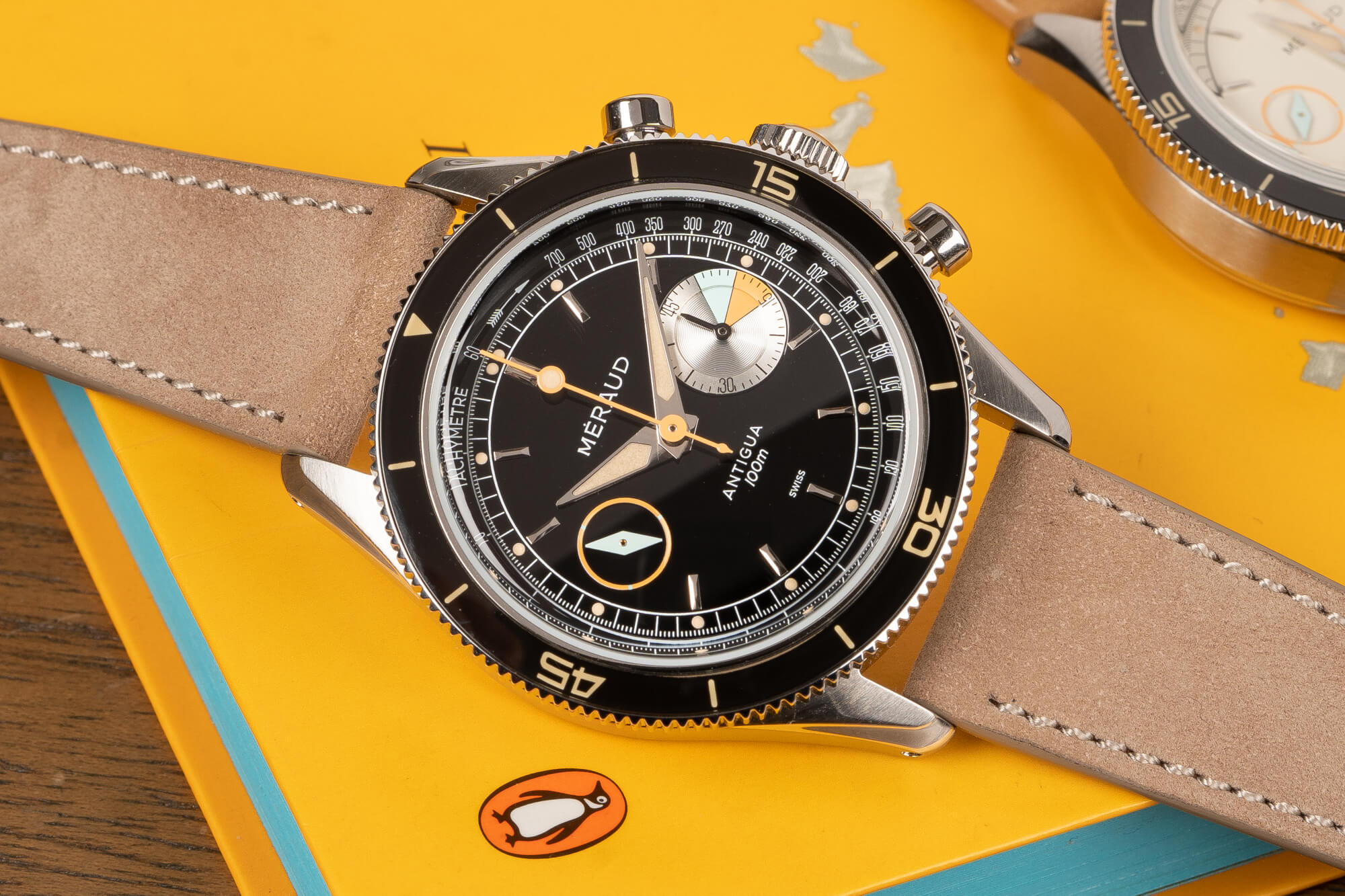 It’s been almost four years since we last heard from Belgian brand Méraud. In 2018, the brand released the Bonaire, a vintage-inspired diver that, along with a few other watches released around the same time, seemed to mark the rise of the vintage-inspired microbrand diver. Since then, we’ve seen innumerable other brands make innumerable other models variously inspired by the past and its watches. But after the Bonaire, Méraud went silent. I actually wondered if the brand had simply disappeared, one and done. Then, I got a message from founder Stijn Busschaert letting me know that he was back and had another great watch he was about to release. While I had liked the Bonaire, the Méraud Antigua is even more impressive.
It’s been almost four years since we last heard from Belgian brand Méraud. In 2018, the brand released the Bonaire, a vintage-inspired diver that, along with a few other watches released around the same time, seemed to mark the rise of the vintage-inspired microbrand diver. Since then, we’ve seen innumerable other brands make innumerable other models variously inspired by the past and its watches. But after the Bonaire, Méraud went silent. I actually wondered if the brand had simply disappeared, one and done. Then, I got a message from founder Stijn Busschaert letting me know that he was back and had another great watch he was about to release. While I had liked the Bonaire, the Méraud Antigua is even more impressive.
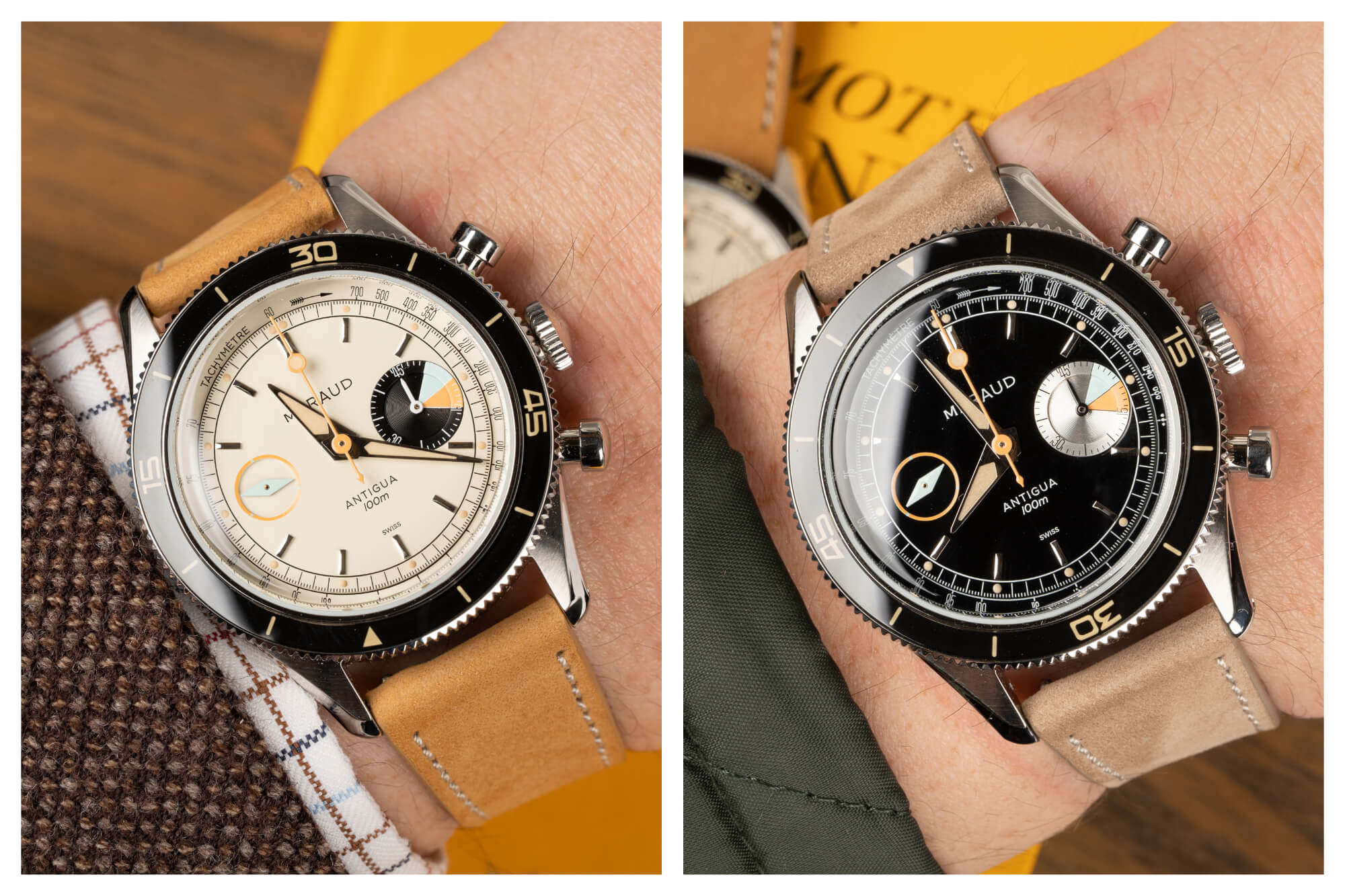
The idea here isn’t anything new. We’ve seen a slew of vintage-inspired chronographs of late, and some of them even include new-old-stock movements. More often than not, these retro chronographs come from brands that have big back catalogs from which they can draw. Timex, Citizen, and Tissot have all revisited old chronograph designs recently, and Sean just spent an entire Monday lauding the TAG Heuer Monza reissue. Heck, Longines has basically defined itself with its Heritage collection, including a bevy of chronos. And then there are the zombie brands, brought back from the dead by enterprising enthusiasts who have recreated classic timepieces, like Lebois & Co. and Nivada Grenchen. In fact, it was Nivada that recently collaborated with Worn & Wound for a 20-piece, $6,900 edition of its Chronomaster equipped with a new-old-stock Valjoux 72. The Méraud Antigua seeks to appeal to the same base, with a thoughtful color palette, a beautiful case, and new-old-stock Landeron 248 movements (and at 1/3 the price of that Nivada).
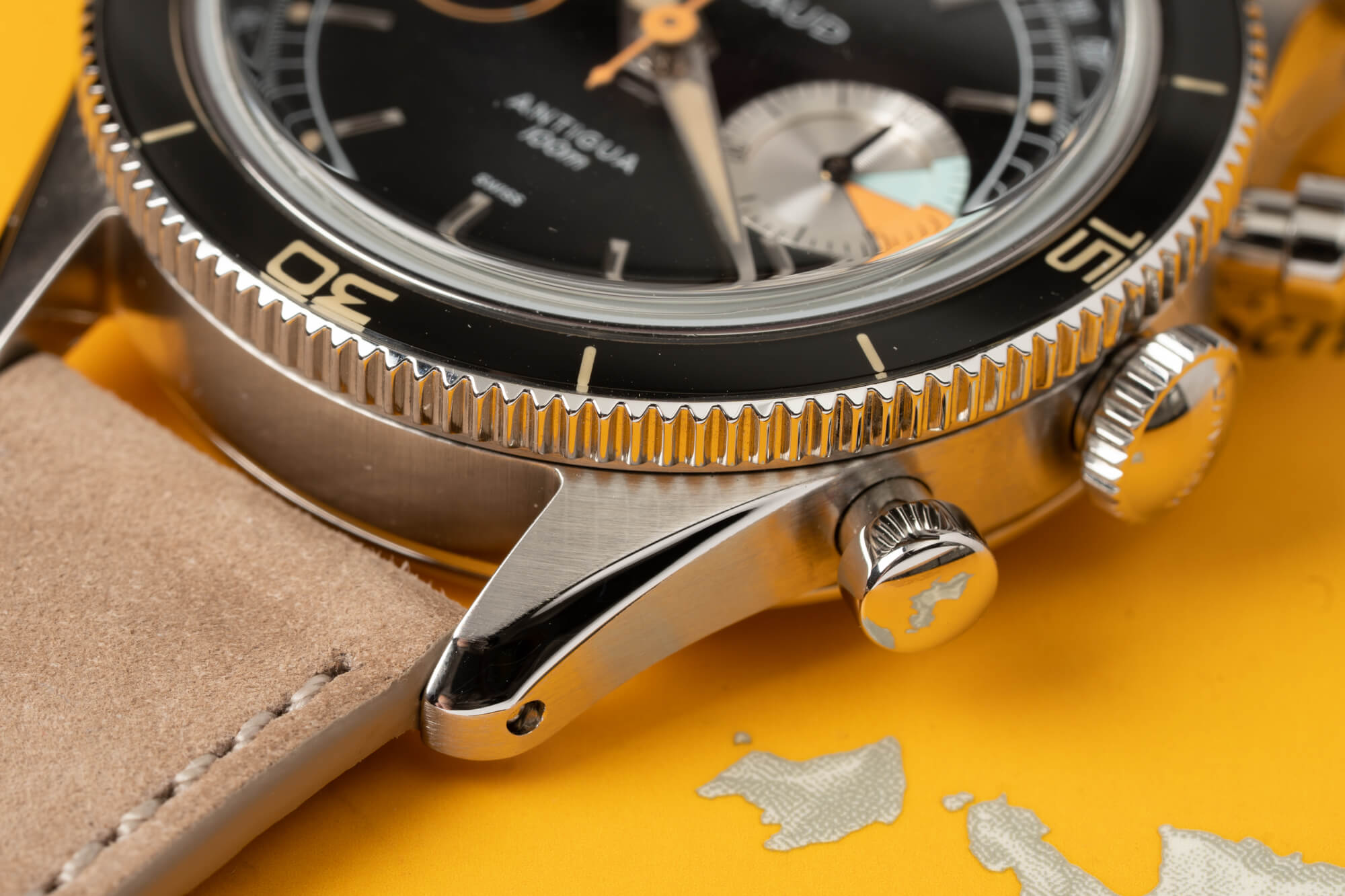
While there’s plenty to love about the whole watch, in my opinion- it’s the case that really makes it. At 40mm wide and 48.6mm-long, the relatively flat case sits neatly on the wrist, with modern proportions that somewhat betray its vintage styling. The 13.5mm height isn’t winning any awards for slimness, but neither is it a punishing thickness; the case never feels unwieldy, managing to avoid the towering presence of many modern chronos (even vintage-inspired ones). But there are two elements that really stand out for me. The first is the sweeping chamfers on the drilled lugs that expand along the lugs’ profile and then curve in at the termina. On an otherwise simple case, this elegant flourish—carried over from the brand’s Bonaire diver—adds a bit of class and charm. The second element that struck me is the crown. Yes, it’s just a simple pull-out crown flanked by pump pushers, but what I appreciated was its shape and size. Instead of sitting flush against the case when pushed in, it has a short tube before the ridged head, allowing for easy grip when necessary. It’s a small but functional consideration.
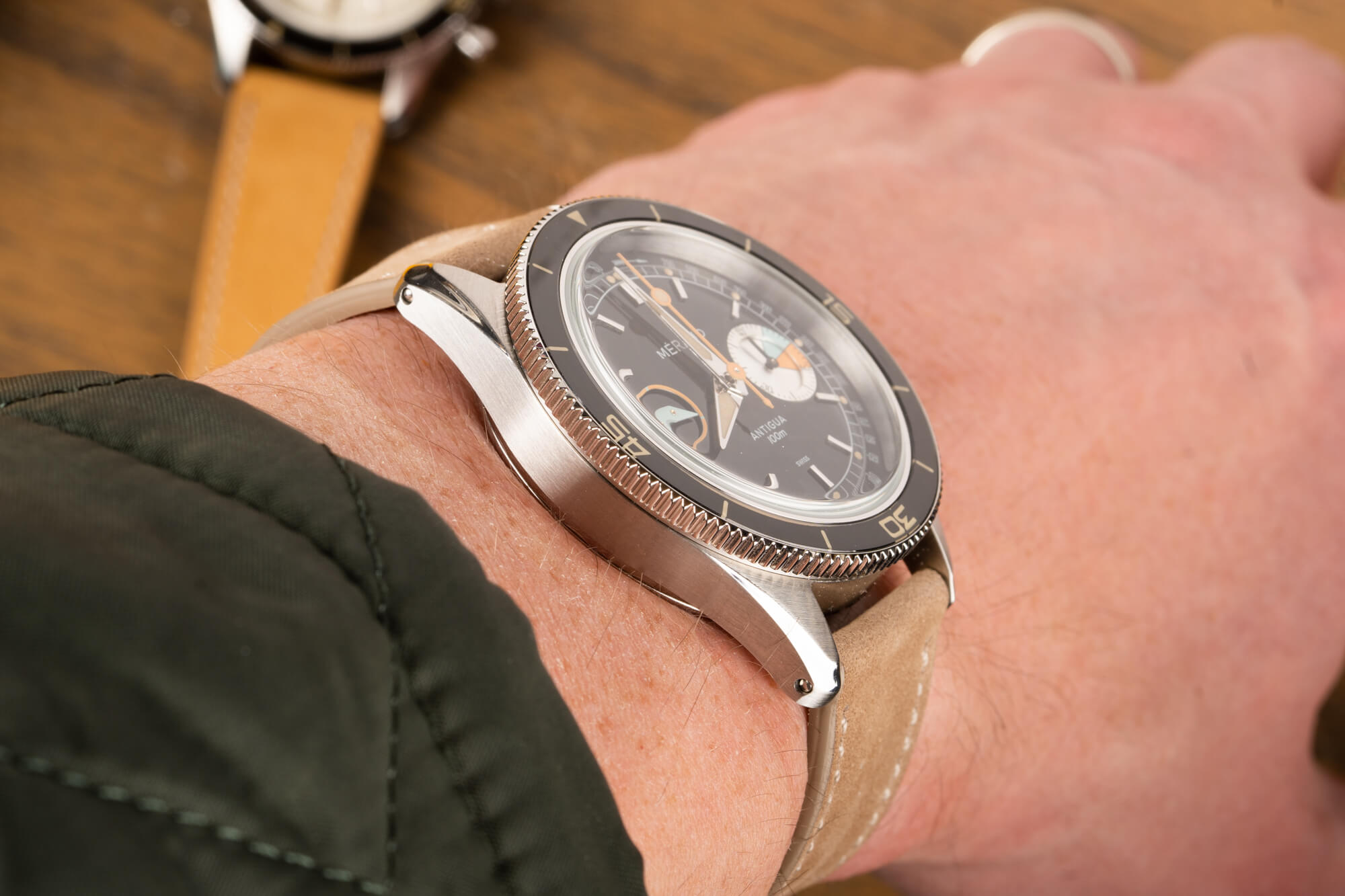
In truth, the Méraud Antigua offers functionality beyond the typical chronograph. Thanks to its fully lumed uni-directional sapphire bezel, it’s more of a chrono-diver, a less frequently seen variant of the standard chronograph, but one that is certainly experiencing a resurgence in popularity. The bezel is incredibly satisfying and easy to operate, with distinct, audible clicks, but what I love is that while it’s a sapphire insert, it’s flat, avoiding the temptation to be round and bulbous (a temptation which many other recent watches have not managed to resist). Paired with 100m of water resistance, the Méraud Antigua is a chronograph you can actually take—and use—in the water. Or, like most of us aspirational watch enthusiasts, you can just use it to time the pasta and do the dishes.
To that end, the leather you see here is not the only strap included or available with the Antigua. The picture straps are lovely quick-release offerings from well-regarded strap maker Molequin. I found them very comfortable and not overlong like many stock straps these days (I don’t want to exclude anyone, but maybe people with very large wrists should have to deal with that on their own, instead of making the rest of us suffer with strap tails that flap about). But for the waterborne among you, the Antigua will also come with a rubber tropic strap (black for black, green for sand), and, perhaps most importantly, there is a riveted oyster-stye bracelet similar to that found on the old Tudor Rangers that can be purchased for $138 and has fitted end links for a seamless look (you can check out both in the gallery at the end of the review).
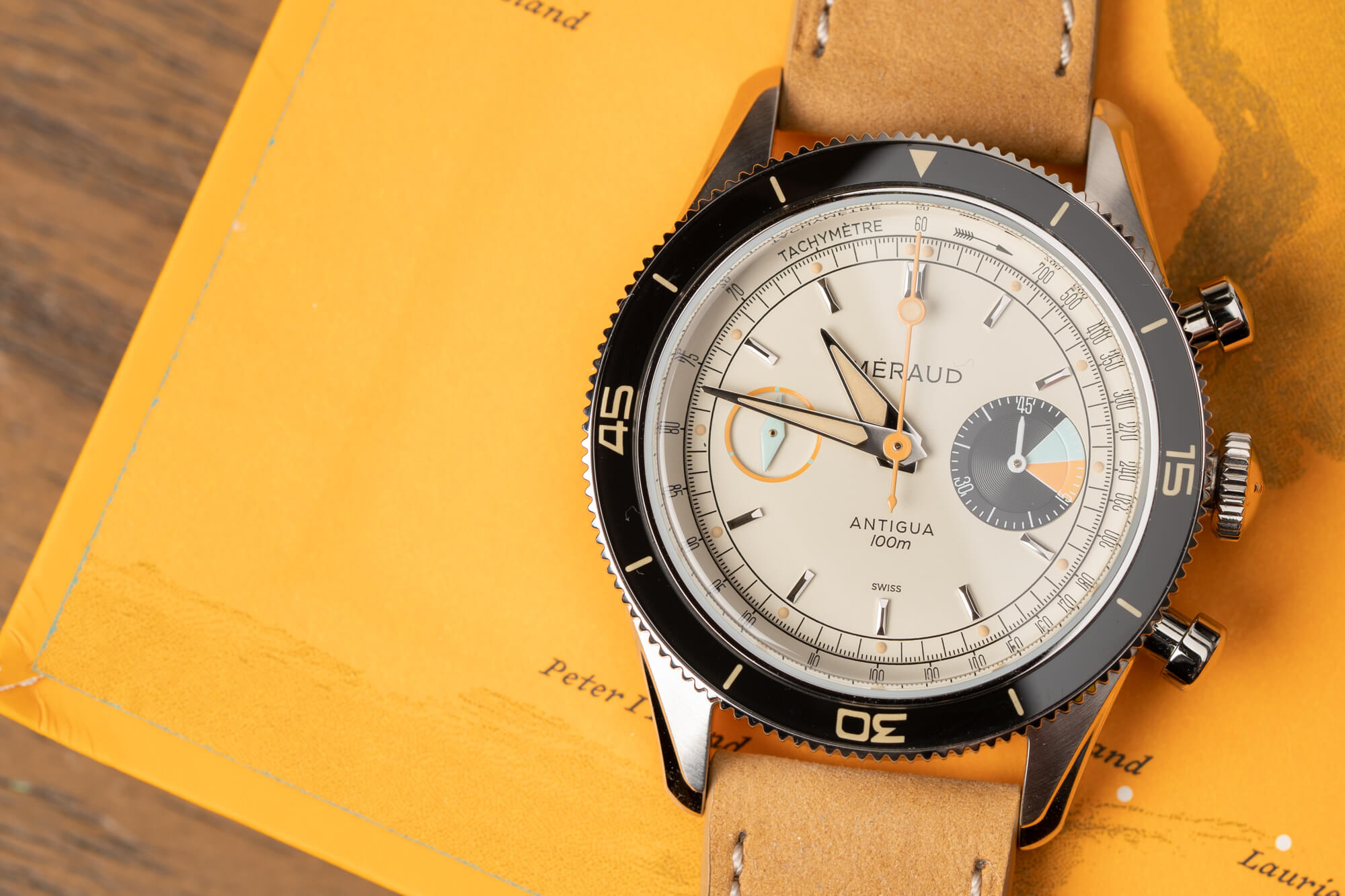
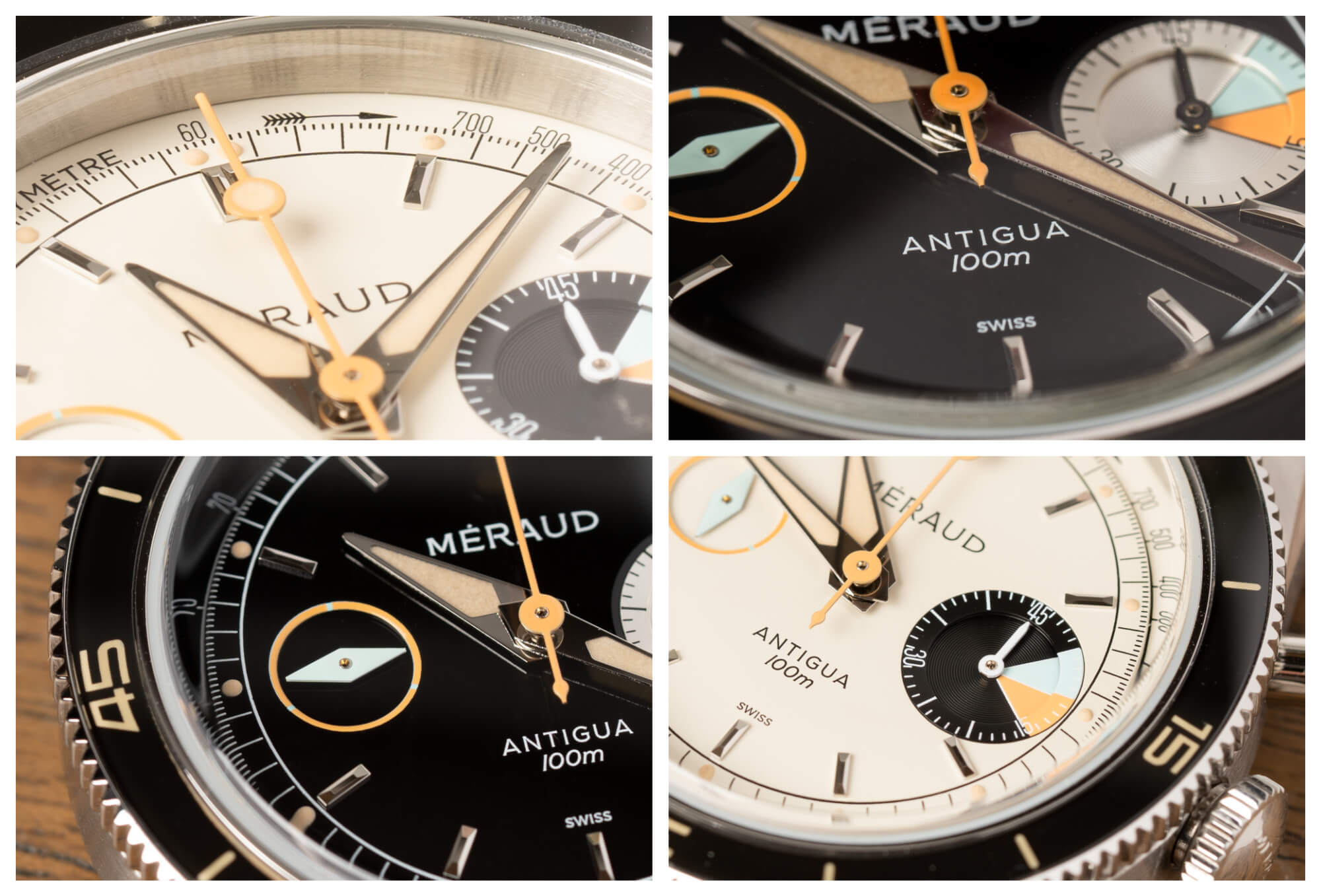
The Antigua dial is both exciting and restrained. Certainly, we all love a bit of color, a splash of excitement in an otherwise subdued dial. Some chronographs—especially those with regatta or soccer timers, it seems—go especially wild with color, which can be a lot of fun, but I’ve always found a bit limiting with regards to occasions for wear and strap pairings. The Antigua on the other hand offers two dials with complementary colorways that neither scream out for attention nor get lost in the crowd. Offered in black (“Miho Black”) or sand (“Soft Sand”), both dials use faded shades of blue and orange to add a bit of character. The sunken big eye 45-minute chronograph subdials at 3 o’clock offer azurage finish with 5-minute color block demarcations. At three 3 o’clock, a running seconds acts more as a running indicator than a seconds hand, given its single-color, two-ended diamond hand. (It may be more accurate to call the 9 o’clock dial a small eye than to call the 3 o’clock dial a big eye. Please discuss in the comments.)
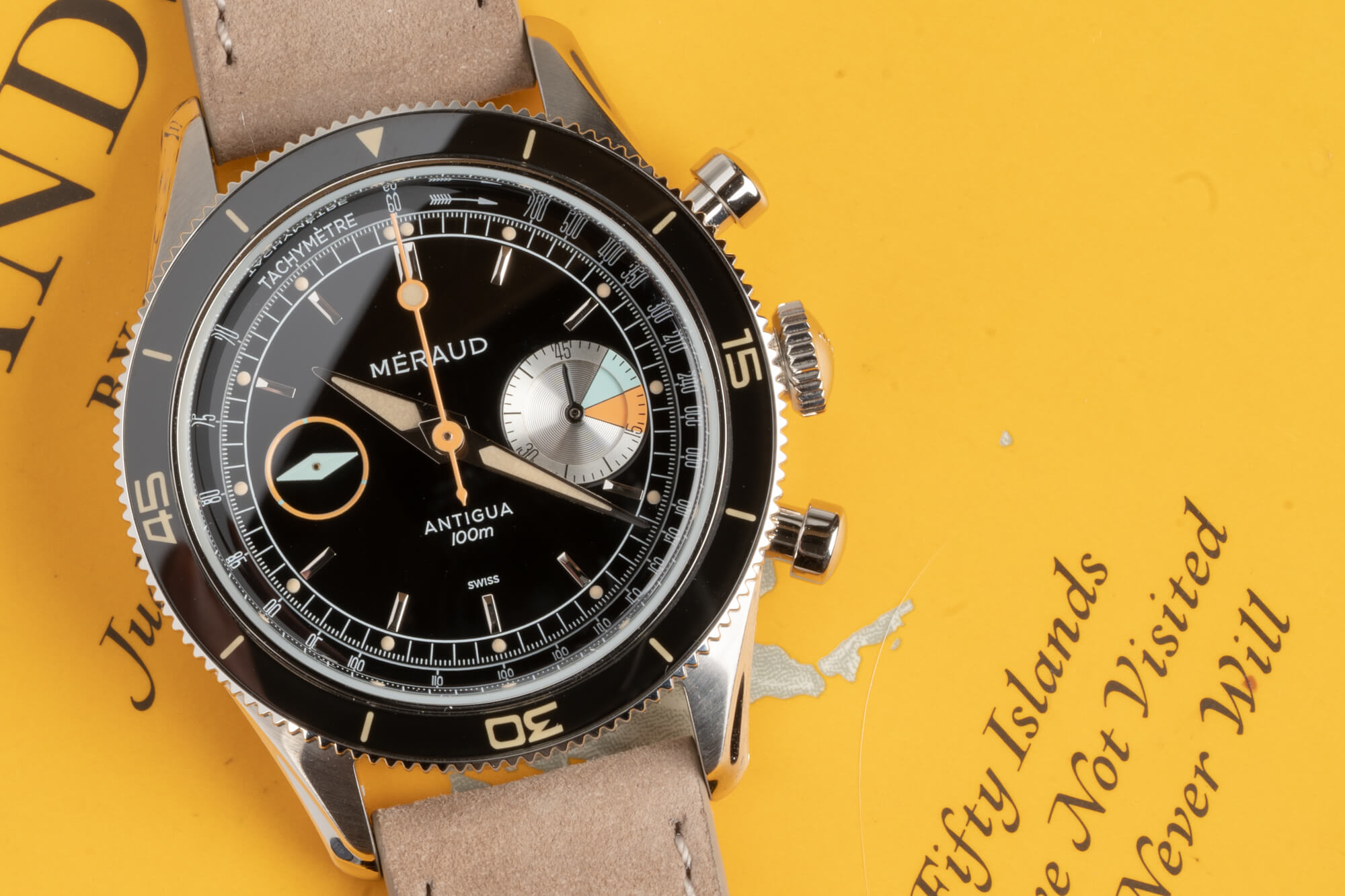
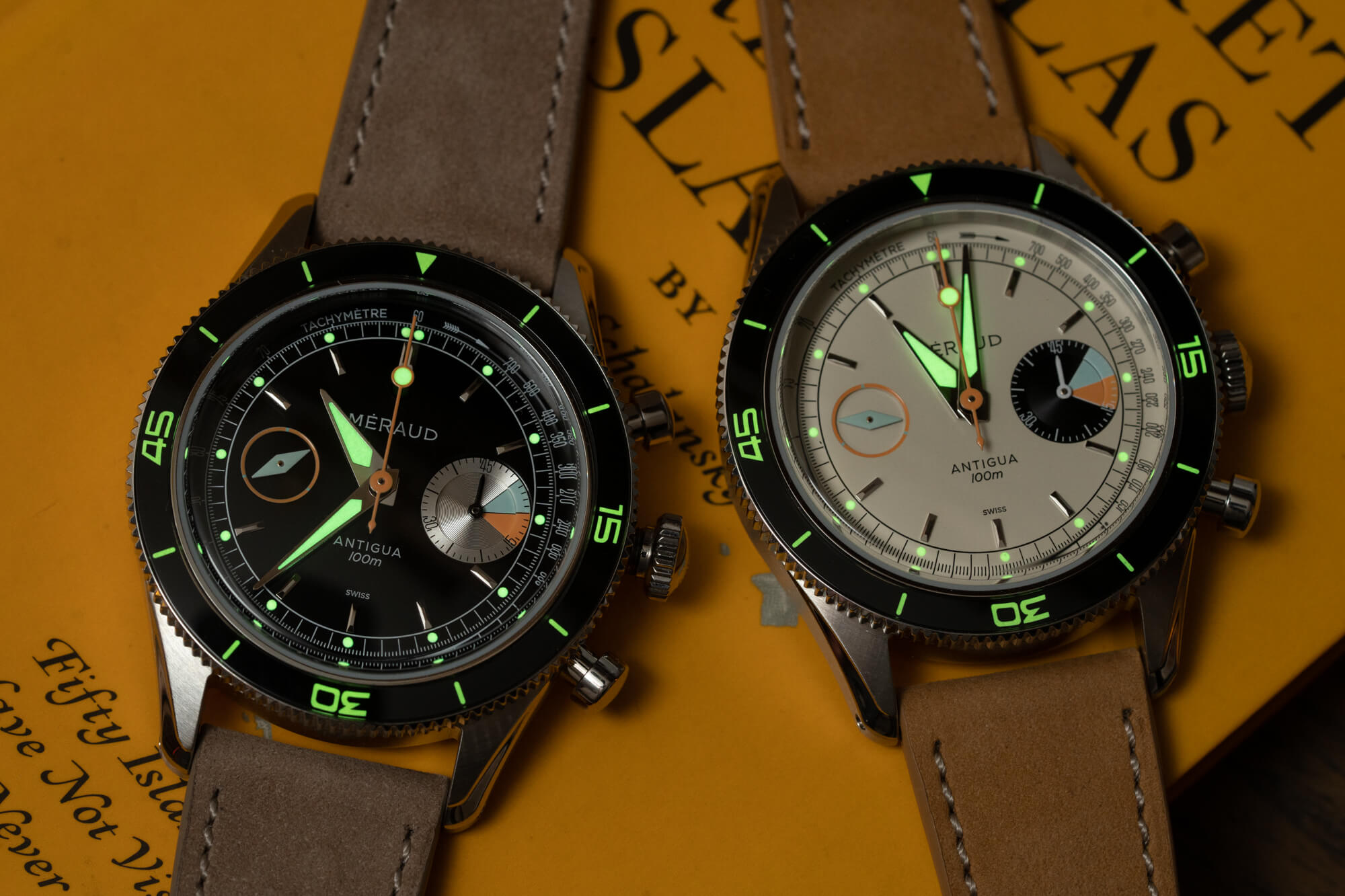 It’s not immediately clear, but the dial itself is raised above the peripheral tachymeter scale, adding additional depth. The polished applied indices complement the oversized hands. I say oversized because the handset is decidedly wide, similar to some of the handsets used by Universal Geneve on its Tri-Compax chronographs. And there are, of course, some who will moan and groan about the choice of lume, here. Accusations might be hurled about “fauxtina.” I say poppycock and balderdash to that. The lume color used pairs perfectly with color schemes. On top of that, it shines incredibly well for both the lume color (which often suffers from weaker glow) and being a chronograph (on which lume is typically an afterthought). For my part, I prefer the sand dial, with less contrast and more tone-on-tone vibes than the black, but there’s plenty to love about both.
It’s not immediately clear, but the dial itself is raised above the peripheral tachymeter scale, adding additional depth. The polished applied indices complement the oversized hands. I say oversized because the handset is decidedly wide, similar to some of the handsets used by Universal Geneve on its Tri-Compax chronographs. And there are, of course, some who will moan and groan about the choice of lume, here. Accusations might be hurled about “fauxtina.” I say poppycock and balderdash to that. The lume color used pairs perfectly with color schemes. On top of that, it shines incredibly well for both the lume color (which often suffers from weaker glow) and being a chronograph (on which lume is typically an afterthought). For my part, I prefer the sand dial, with less contrast and more tone-on-tone vibes than the black, but there’s plenty to love about both.
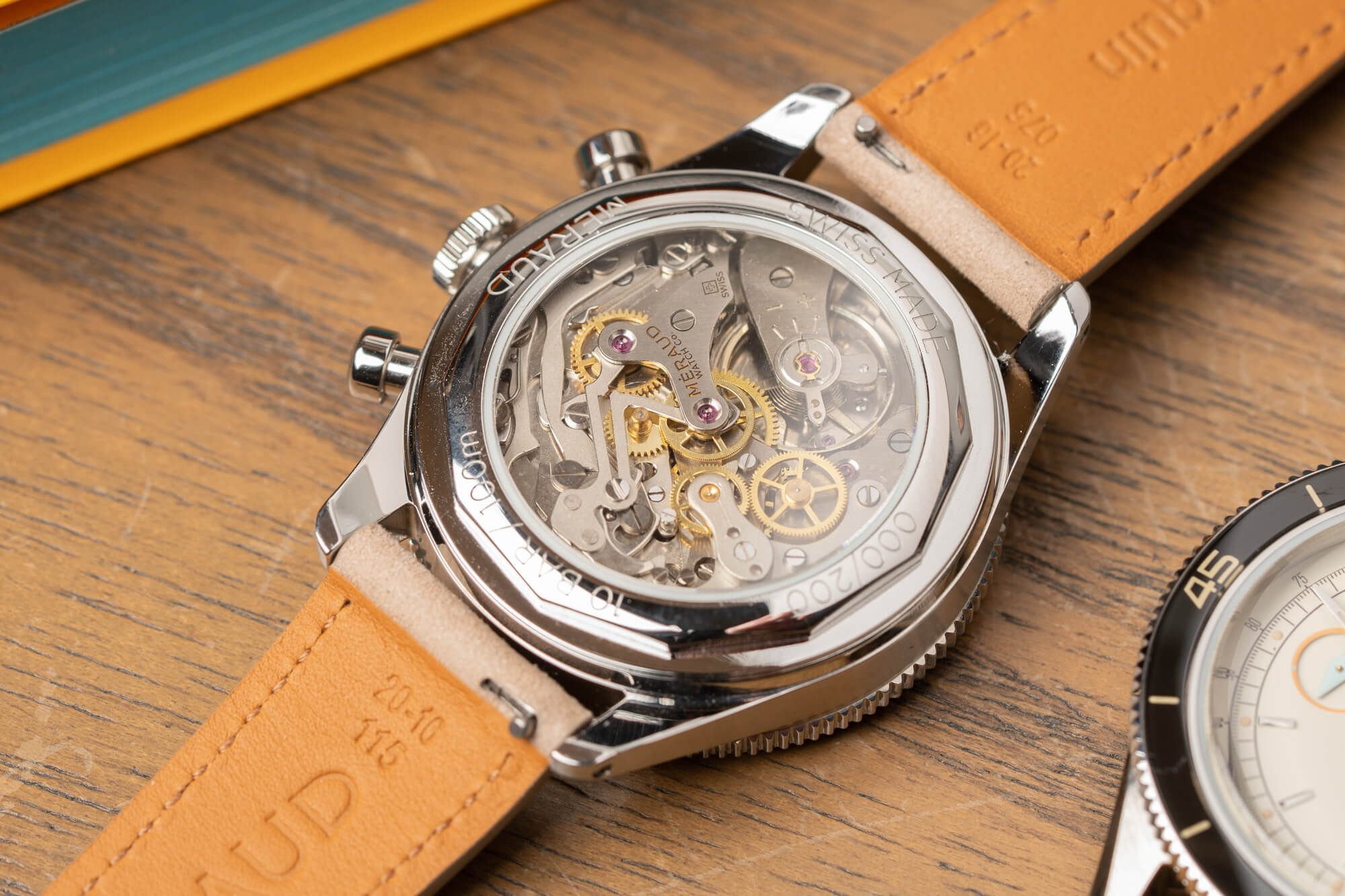
Part of the wait for these watches—Méraud’s second—was hunting for a suitable batch of NOS chronographs (The other part was a global pandemic). It took two years to find the 200 Landeron 248s that power the Antiguas, and they’ve been completely overhauled to run like new. Seen through the sapphire caseback, that will be the main attraction for many, putting the dial and the case in the back seat if not in the trunk. The Landeron 248 was part of the Landeron 48 family, the first cam-operated chronograph produced, with over 3.5 million made from 1937-1970, and used by brands like Leonidas, Heuer, and Nivada, among many others; even today, these are not uncommon to find on vintage watches. The mechanism has a bridge engraved with the brand’s name and operates at 18,000 vph (2.5hz) with a power reserve of around 41 hours. While these specs aren’t quite what you’d get from, say, Sellita’s manual-wind SW510 (4hz and 62 hours), I think the movements are plenty robust, and 20 hours of power is a fair trade for a cool NOS movement.
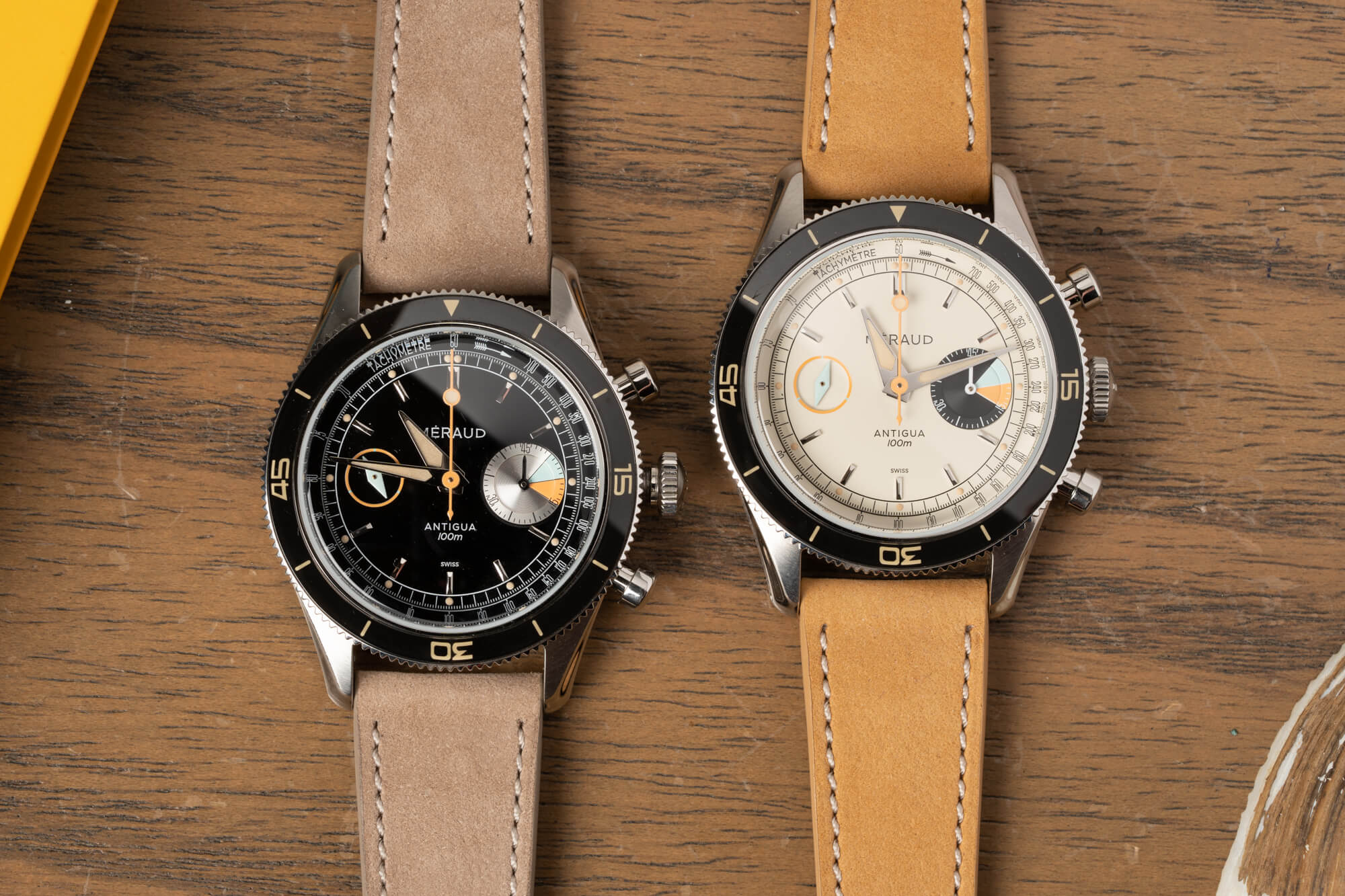
While I think we’d all love to see new designs (that is, designs that aren’t “vintage-inspired”), there is an undeniable attractiveness of the beauty of yesteryear, one that has consumed watch designers for years now. The Méraud Antigua isn’t your only option when it comes to vintage-inspired chronographs, nor the only option with an actual vintage movement. You can get the former for less (but try finding a case as nice on one of them) or the latter for often quite a bit more. But the Antigua does is to play on that attraction with heavy vintage inspiration and that special movement, but balanced with a contemporary case and dial, both impeccably executed. The Méraud Antigua Chronograph is priced at $1,911 USD and is limited to 100 pieces per model; delivery is expected in Fall 2023. For more information, please visit the brand’s website.
